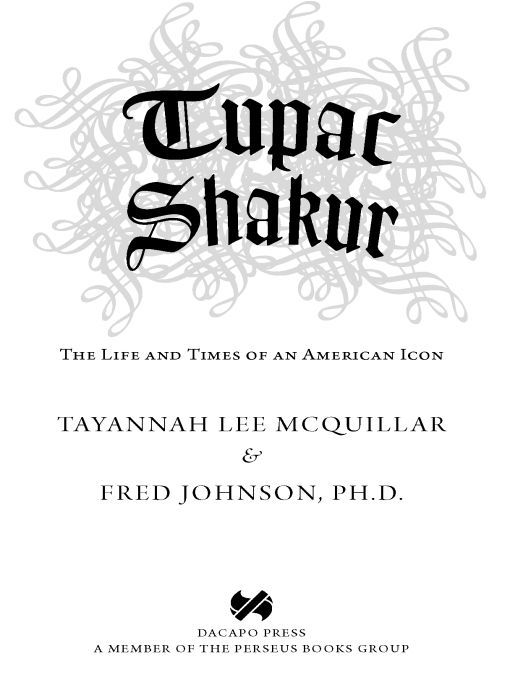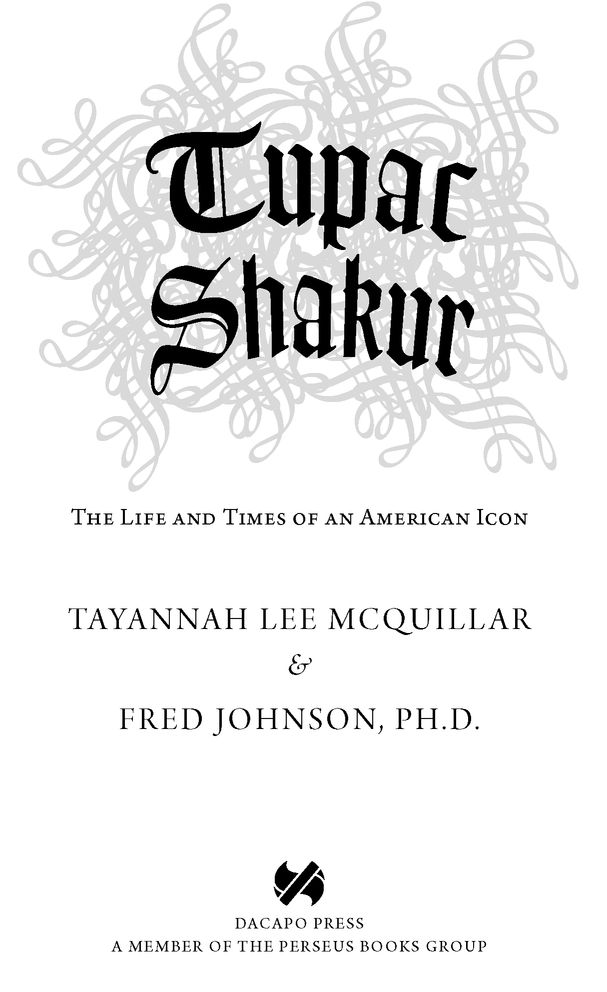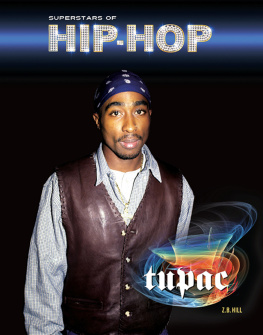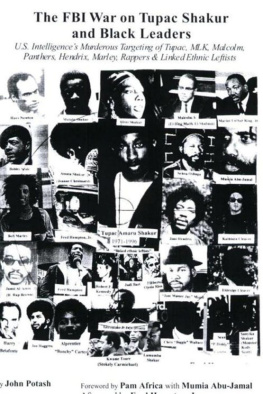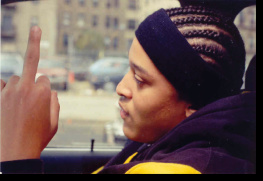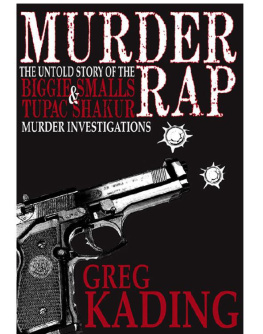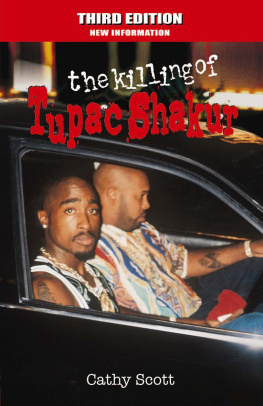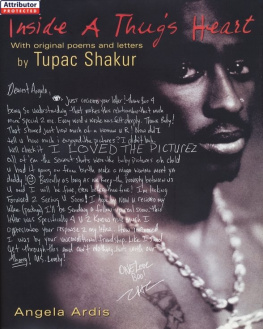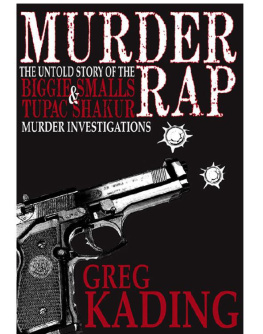Table of Contents
Hip-hops greatest gift and its heaviest burdenis its legacy of urban mythology. It will be remembered as that bittersweet moment when young black men captured the ears of America and defined themselves on their own terms.... In doing so, they raised a defiant middle finger to a history that shamed them with slavery, misrepresented them as coons and criminals, and co-opted the best of their culture.
JOAN MORGAN
Vibe MAGAZINE
OCTOBER 1995
part one
SAVIOR
one
THE BOY FROM NOWHERE
He was fifteen years old. His life had been a series of new addresses, hunger pangs, political meetings, and scary questions from FBI agents. Since early childhood, he had fought hard to survive.
He wrote poetry about love, life, and loneliness. He called himself MC New York and dreamed of someday becoming a rap star.
He came from nothing and nowhere. It was 1986 and a terrible war was being waged upon the poor in Tupac Shakurs America. He was always broke and kids teased him about his strange name and ragged clothes. He learned to use fake bravado and refined his skills on the microphone to make his peers like or at least respect him.
He hung out with his friends, bought marijuana for his mother, and stayed at his friend Johns house whenever he could. John was a wealthy white boy who used to attend Tupacs school. There was always food at Johns house.
Tupac Shakurs life was a rags-to-riches saga with elements of loneliness, cowardice, generosity, delusion, courage, humiliation, celebrity, and a lifelong quest for family approval. It began in Lumberton, North Carolina.
two
LUMBERTON
Growingup, Tupac Shakur heard much about the Lumbee Indians of Lumberton, North Carolina. They were alleged to be the only Native Americans to wage war against the Ku Klux Klan and win. Tupacs maternal ancestors came from Lumberton.
Founded by an act of the North Carolina General Assembly in 1787, Lumberton was the Robeson County seat. It had been established in 1787 in honor of Colonel Thomas Robeson, whod fought in the Revolutionary War at the battle of Elizabethtown and defeated the British sympathizers.
When Lumberton was incorporated, the section of the Lumber River where it was located was known as Drowning Creek. Lumber and naval supplies were shipped from there. The citys economic development was based on lumbering, tobacco curing, textile and apparel manufacturing, and farm produce.
In the 1730s when Anglos from the Scottish Highlands settled in the area, they found local inhabitants who were the descendants of Native American ethnic groups like the Tuscarora, Cherokee, and Chera. A few spoke English as a result of contact with English settlers during the colonial period. That contact had often been characterized by suspicion and conflict.
Area Native Americans consistently resisted injustice and harassment. For example, in 1715 the Yamasee people led a mass uprising against the English whod been their one-time allies in a war against the Tuscaroras. The source of conflict had been the breakdown in trade relations with the whites, and this, among other things, resulted in the Yamasees becoming dependent upon European goods and the steady loss of their ancestral lands. Attempts by colonial authorities to force the Yamasees onto reservations as well as Yamasee anger at their reduction to peonage produced warfare on April 15, 1715.
Fighting alongside the Yamasee, at least for a moment, were the Creeks, Choctaws, and Cherokees. But Cherokee dependence on European goods and cultural affinity eventually ruined the Native American alliance. The Yamasee and their allies fled, opening up more land for European settlement.
By the time the Scots Irish settled into the area of the Lumber River, the region had seen its fair share of conflict between Native Americans and European settlers for land and resources. Those Scots Irish settlers also found among the Native Americans of both freed blacks and runaway slaves.
When the American Civil War broke out in 1861, Native Americans, blacks, and whites had spent years in troubled coexistence. The tension boiled over during what became known as the Lowry War in 1865.
Stories pertaining to the Lowry War held that seventeen-year-old Henry Berry Lowry witnessed the execution of his father, Allen Lowry, and his brother, William, by the Confederate home guard. They had been suspected of leading a gang that had evaded authorities seeking to dragoon them into working hard labor for the Confederacy.
The men and their followers hid in swamps and eventually staged a series of raids on wealthy planters. The Confederate home guard, a type of local militia, searched farms and homes on March 3, 1865; they found stolen guns, clothes, and other items at Allen Lowrys home. He was subsequently arrested along with his wife and five of their twelve children.
In the hastily convened trial that followed, two of Allen Lowrys sons, Calvin and Sinclair, were acquitted since no stolen items had been found on them. Their brother William tried to escape but he was eventually executed along with his father.
Henry Berry Lowry watched the proceedings from a nearby thicket and resolved to seek revenge. The young Native American marshaled his black and Indian supporters and they waged a seven-year campaign of guerrilla war, raiding and harassing wealthy elites and outfoxing local law enforcement.
For the poor communities of impoverished and harassed Native Americans, blacks, and even poor whites, Henry Lowry and his raiders became heroes. Lowry and his followers came to symbolize the power of the powerless to resist those who preferred that they quietly endure their small worlds of blight and misery.
Perhaps it was the courage of the Lumbee Indians and Henry Lowry that encouraged other citizens to stand their ground and fight against bigotry and injustice.
In the late 1890s, Tupacs great-great grandfather, a dirt-poor white man from Lumberton who went by the name of Powell, married a black woman named Millie Ann. As punishment, his family tied him to a wagon, dragged him through Lumberton, and never spoke to him again. Millie Ann was religious and walked the dusty roads of Lumberton singing gospel music and reading Bible verses from door to door.
By the end of the 1920s, Powells family and most southerners were faring poorly. Charles J. Shields, author of Mockingbird, noted that the cultural index, or standard of living, in the South at the end of the 1920s was already the lowest in the nation. The region was at the bottom of the list in almost everything: ownership of automobiles, radios, residence telephones; income per capita; bank deposits; homes with electricity, running water, and indoor plumbing. Its residents subscribed to the fewest magazines and newspapers, read the fewest books; they also provided the least support for education, public libraries and art museums.
As the twentieth century progressed, discontent in the face of southern racism simmered in Lumbertons impoverished black community and among Native Americans. Tupacs mother, Alice Faye Williams, a great-granddaughter of Powell and Millie Ann, was born in Lumberton into this atmosphere of conflict and resistance on January 10, 1947.

